Last updated on
Discover innovative solutions for placing a bed over a vent, because maximizing space while maintaining airflow can transform your bedroom into a comfortable retreat.
I am truly delighted to have penned this detailed guide on “20 Creative Ideas and Solutions for Putting a Bed Over a Vent,” along with innovative designs that I hope will inspire you as much as they did me during the creation process.
Placing a bed over a vent can seem like a challenge, but with a few clever strategies, it can be done efficiently without compromising air circulation.
This article delves into the best solutions to ensure optimal airflow, from using vent extenders to bed risers.
It also explores the importance of maintaining a clean vent and how to achieve this.
By the end of this article, you’ll have all the information you need to comfortably and safely position your bed over a vent.
Table of Contents
Installing Bed Risers for Airflow
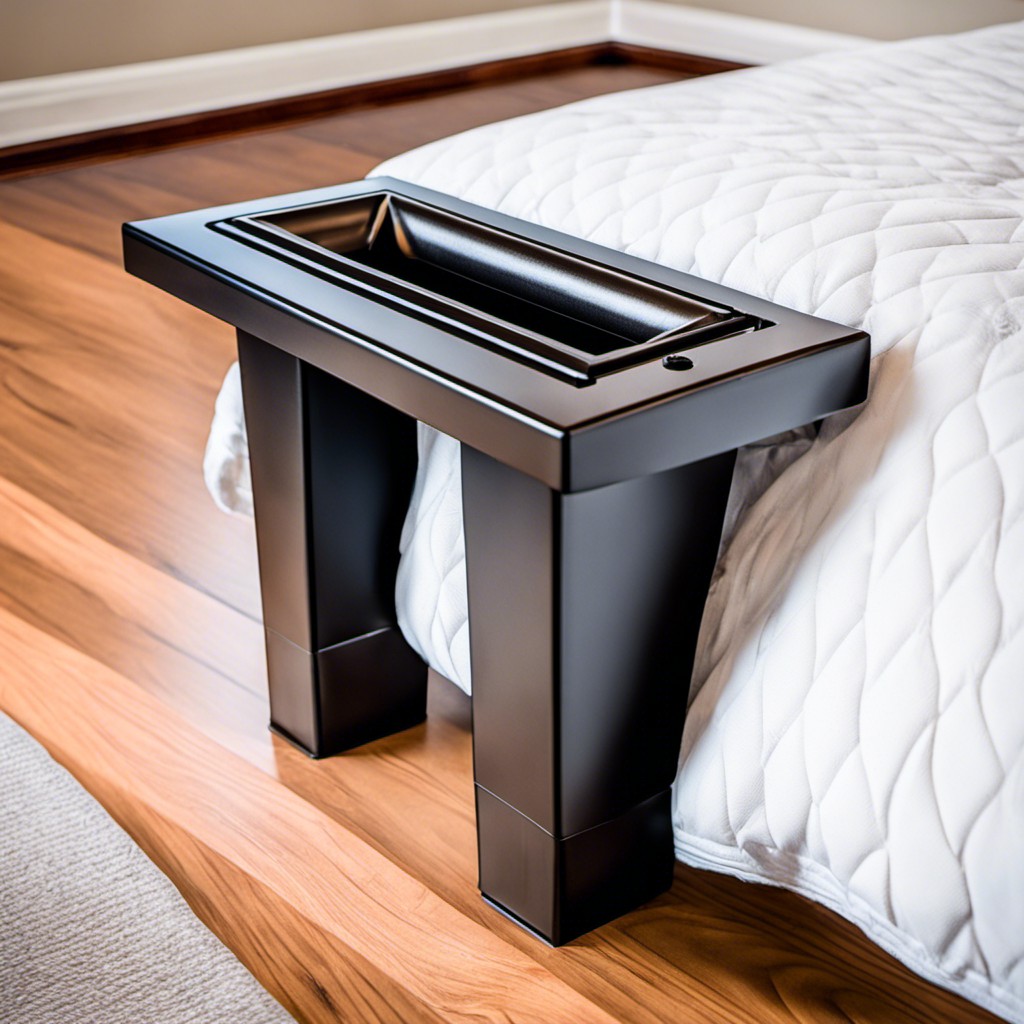
Bed risers are an effective solution in maintaining smooth airflow and circumventing obstruction caused by the bed. These handy tools lift the bed off the ground, offering increased space for the air to move freely.
Here are some noteworthy factors to consider:
- 1. Material: Bed risers come in a variety of materials, including plastic, wood, and metal. Choose one that complements the bed and room decor.
- 2. Height: Depending on the vent size and positioning, opt for a suitable riser height. Higher risers encourage better airflow.
- 3. Weight Capacity: Ensure the risers are capable of supporting the bed and occupant weight. Verify the weight capacity before purchasing.
- 4. Design: Various designs exist, from traditional to creative ones. Few models come with added features such as built-in outlets or storage space.
- 5. Installation: Assembling most bed risers is a straightforward process. Nonetheless, always check the manufacturer’s instructions for trouble-free setup.
Remember, bed risers not only aid in promoting better airflow over vents but also provide additional storage space, making them a multifaceted accessory for your bedroom.
Using a Plastic Vent Extender Under the Bed
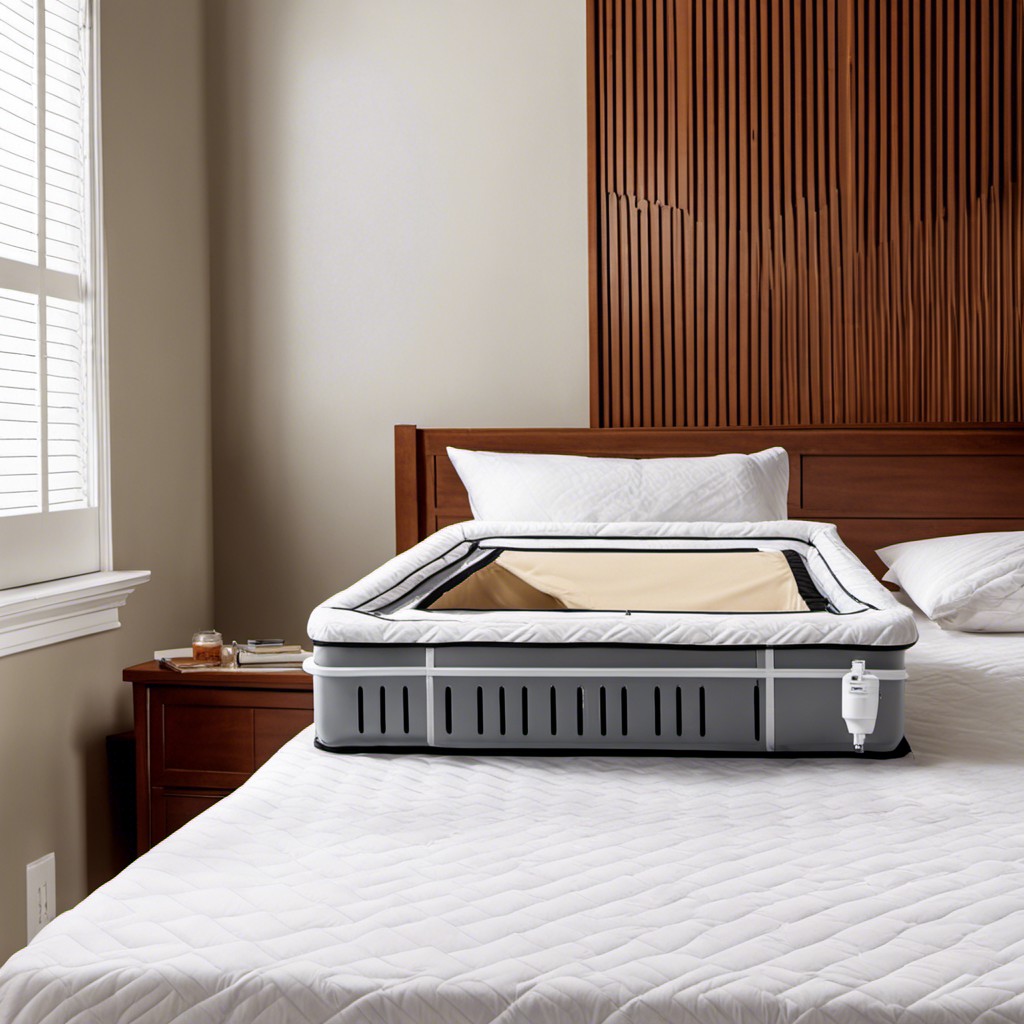
A plastic vent extender proves to be a savvy solution. This thin, adjustable accessory conveniently channels the airflow outward from under the bed. It’s typically flat enough to slide beneath most furniture without a problem, ensuring the air circulates freely.
Before installation, you should measure the gap between your vent and the edge of the bed to ensure the extender length is suitable. Many models are expandable to fit a variety of distances. Oftentimes, they won’t require professional installation, offering a quick and cost-effective way to regulate your room’s temperature.
Prolonged use should not damage these extenders, given their heat-resistant nature. However, ensuring regular cleaning will prevent dust accumulation, fostering a healthier indoor environment. Eventually, this straightforward modification can contribute significantly to maintaining an optimal room temperature while keeping your bed arrangement intact.
Using a Slatted Bed Frame for Circulation
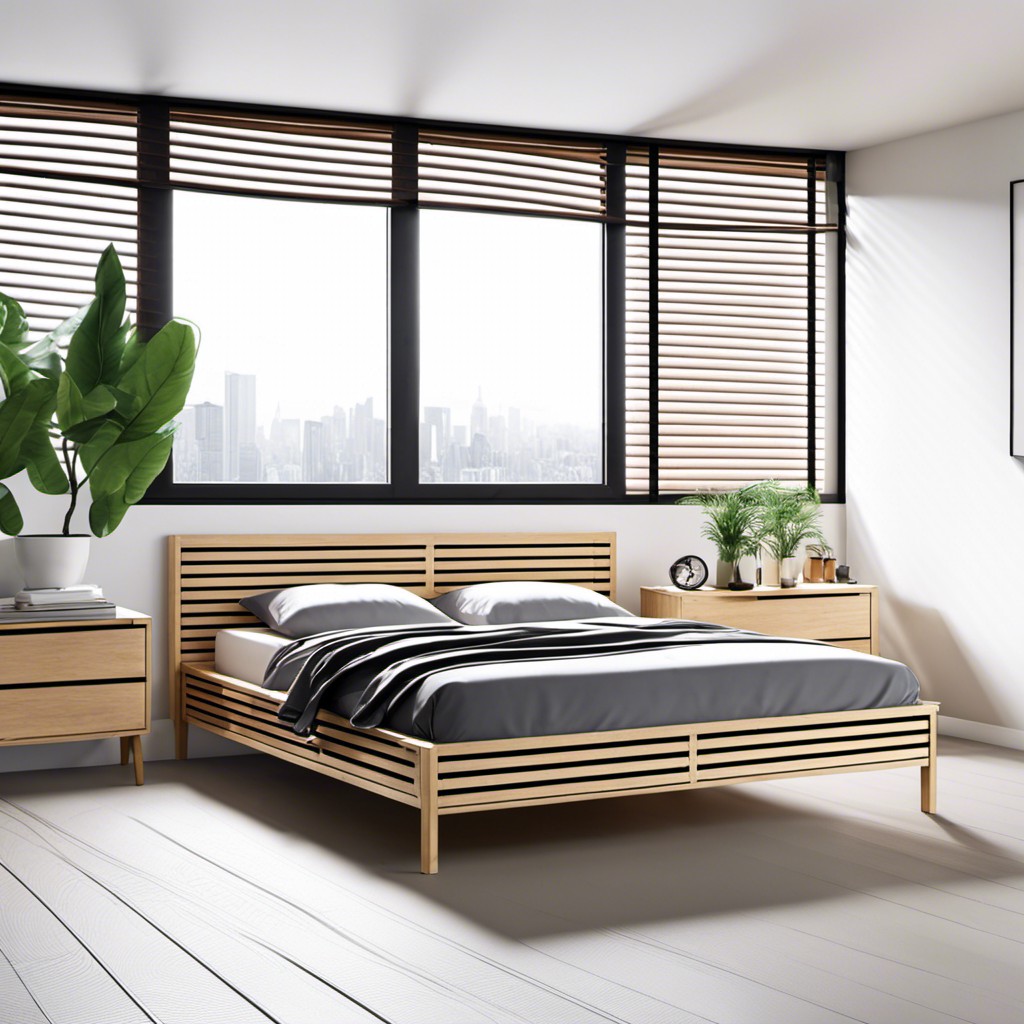
Slatted bed frames offer both functionality and style. Here’s why they’re a great idea:
Firstly, they allow for ample ventilation underneath the mattress. This can be crucial in keeping the airflow steady and undisturbed. The slats are typically distanced evenly, helping to circulate warm or cool air from the vent naturally around your sleep space.
Secondly, the slats are a sturdy support system for your mattress. This means you don’t have to worry about weighing down on the vent or damaging it over time. Even with the weight of the mattress and people, the vent remains secure and functioning.
Thirdly, these types of bed frames come in a wide variety of designs and finishes. You can choose a bed frame that not only helps with airflow but also enhances the overall aesthetic of your room.
Thus, providing a solution that keeps the room comfortable, adds structural integrity and enhances the room decor.
Installing an Adjustable Air Deflector
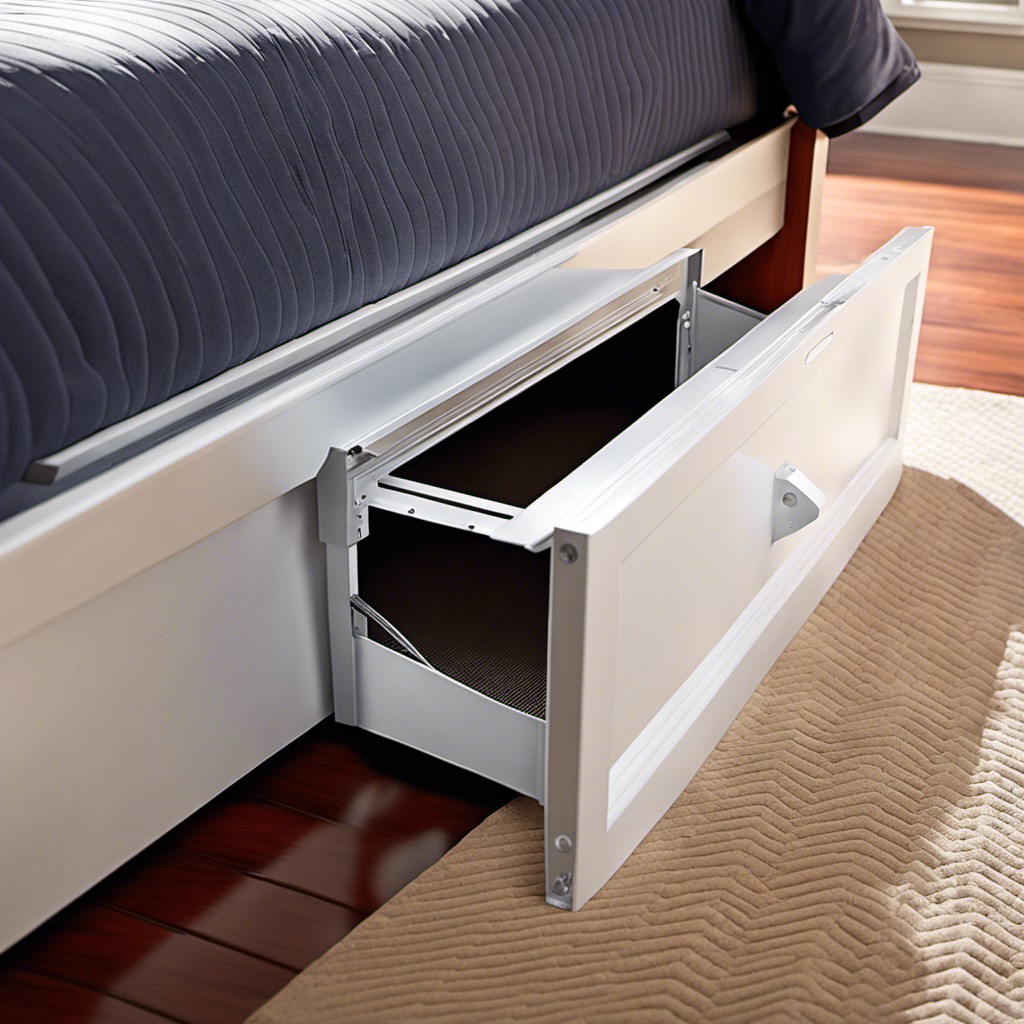
To have an effective and convenient solution to your vent obstruction, consider using an adjustable air deflector. These deflectors come in various forms and sizes, but they all serve the purpose of re-directing the airflow away from your bed.
First, you need to choose a design that suits your vent’s shape and size. They’re mostly available in rectangular and circular sizes. Secondly, look for a deflector that’s easy to install. Most of them come with magnetic attachments or with screws for secure placement.
Using an air deflector doesn’t just assist in maintaining good airflow in your room, but also helps in distributing heated or cooled air more evenly. This way, you enhance the overall comfort of your space while ensuring your heating and cooling systems function efficiently.
Remember, while the deflector redirects the air, it does not restrict it. Therefore, your HVAC system will function as usual, while the air in your room remains breathable and comfortable.
Placing the Bed On a Raised Platform
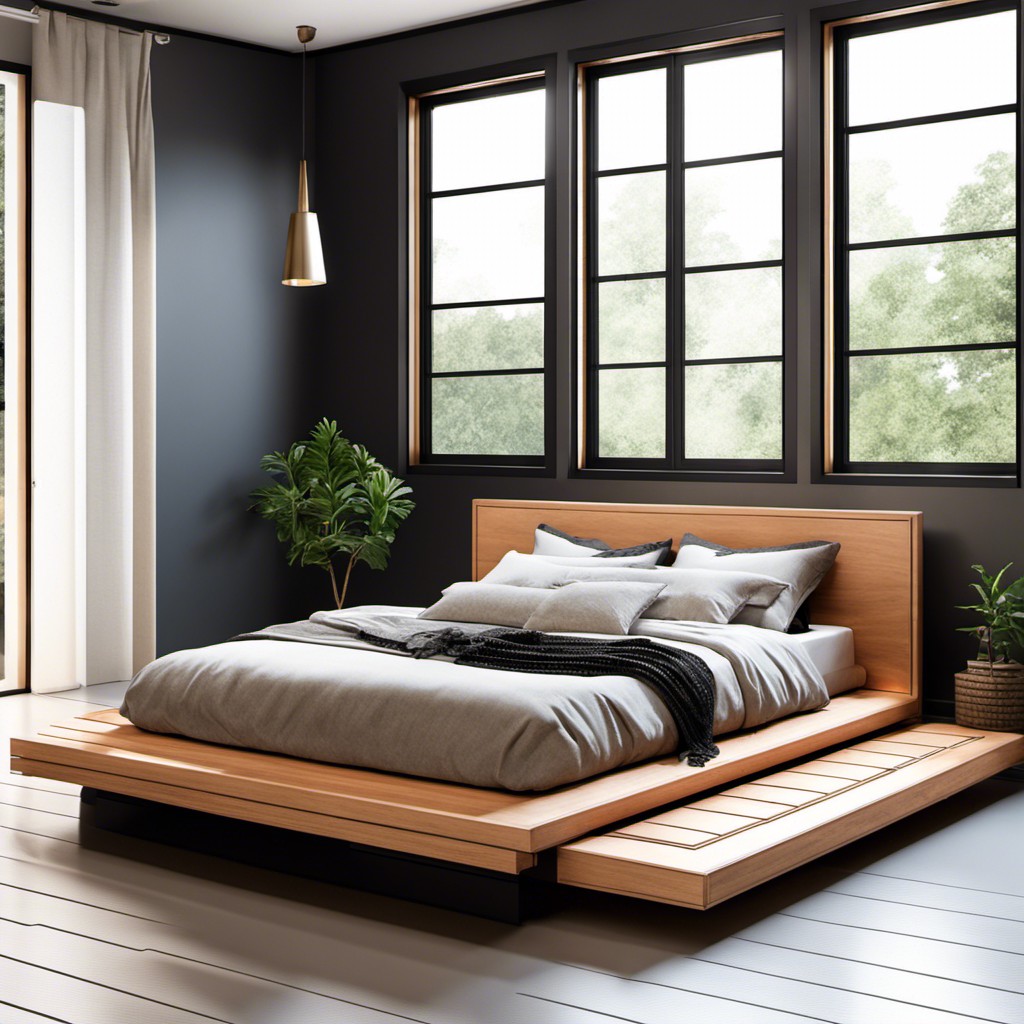
A raised platform creates ample space for airflow. It works especially well when the vent is directly under the bed, ensuring that the heated or cooled air has sufficient room to disperse. The height of the platform can be adjusted depending on specific needs – the larger the gap between the vent and the bed, the more effective the airflow.
When constructing the platform, consider materials such as metal or wood that can withstand weight without blocking air. The design could either cover the entire bed area or just the section above the vent. For added functionality, consider built-in storage compartments. Keep in mind the aesthetics of your room decor, making sure to match or complement the existing style.
To maximize the effectiveness of the raised platform, regular check-ins to clean the vent area from dust accumulation, is important. Maintaining the vent’s cleanliness helps maintain efficient airflow, contributing to an optimal room temperature. No matter the season, this solution ensures comfort and promotes better quality sleep.
Redirecting Airflow With Vent Tubing
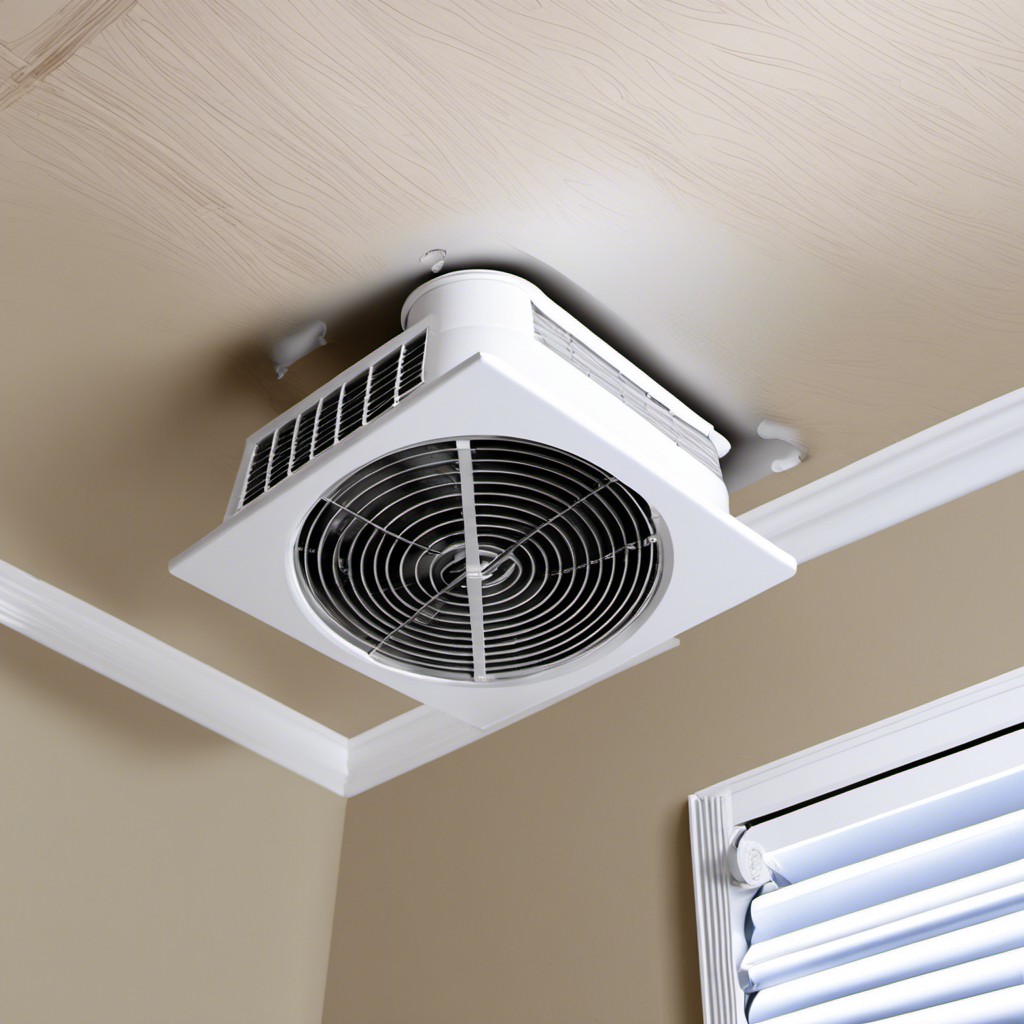
For successful redirection of airflow beneath your bed, vent tubing can be highly effective. Here’s what you need to be aware of:
1. Material: Vent tubing is typically made of flexible plastic or aluminum. Ensure to choose a material that is durable yet flexible for easy maneuvering under your bed.
2. Size: Tubing comes in various diameters. Pick the size that best fits your existing vent for a seamless airflow redirection.
3. Installation: You’ll connect one end of the tubing to the vent and extend the other end to a location away from your bed, allowing the air to freely circulate.
4. Maintenance: Keeping your tubing clean is essential. Regularly check and remove any accumulated dust or debris to increase its efficiency.
By applying these points carefully, you can harness the benefits of vent tubing without compromising the aesthetic or comfort of your bedroom.
Implementing Vent Filters to Decrease Dust Accumulation
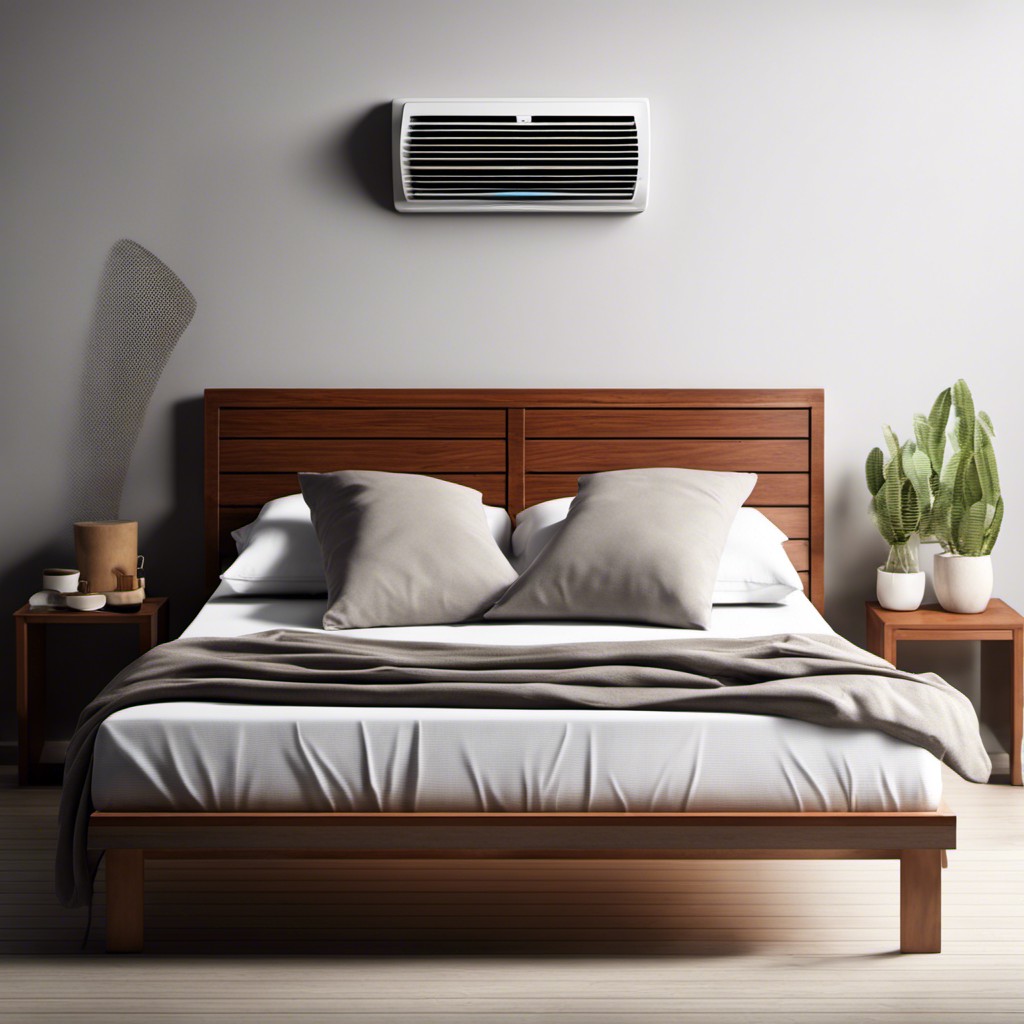
Vent filters can prove to be an excellent solution by trapping dust particles before they enter the bedroom, providing benefits for those suffering from allergies. They also preserve bedding cleanliness and improve overall air quality.
To successfully implement this strategy, do the following:
- Measure your vent’s dimensions accurately.
- Purchase high-quality vent filters that match the specifications.
- Install the filter securely, ensuring an accurate fit.
- Replace the filter periodically when it becomes visibly dusty or per manufacturer’s advice.
Remember, while filters prevent dust buildup, they may slightly restrict airflow. Consequently, adjust your thermostat accordingly to attain desired temperature conditions.
Installing a Vent Fan to Increase Airflow

Commencing with this choice, invest in a high-quality vent fan. The primary purpose of a vent fan is to promote enhanced airflow, particularly beneficial if your bed entirely covers the vent. This fan, once attached to your existing vent, can help redirect the air upwards or sideways, circumventing the bed and ensuring the conditioned air does not stagnate beneath.
Some key points to consider while installing a vent fan are:
- Ensure the fan is compatible with your vent’s size. It’s pivotal that the dimensions match perfectly in order to ensure efficient airflow. Don’t fret; vent fans come in a variety of sizes to match individual needs.
- Installation direction matters. Depending on where the fan is placed in relation to the fan blade’s direction, the air can either be pulled down or pushed up. Be mindful of which direction you require the air to flow.
- Consider fan speed settings. Some fans come with adjustable speed settings, allowing you to control the intensity of the airflow which can be advantageous in regulating the room’s temperature.
Choosing a good vent fan and installing it correctly can help make significant improvements to your bedroom’s comfortability. With a fan in place, you won’t have to worry about blockage affecting your HVAC system’s efficiency.
Using Vent Covers for Redirecting Air
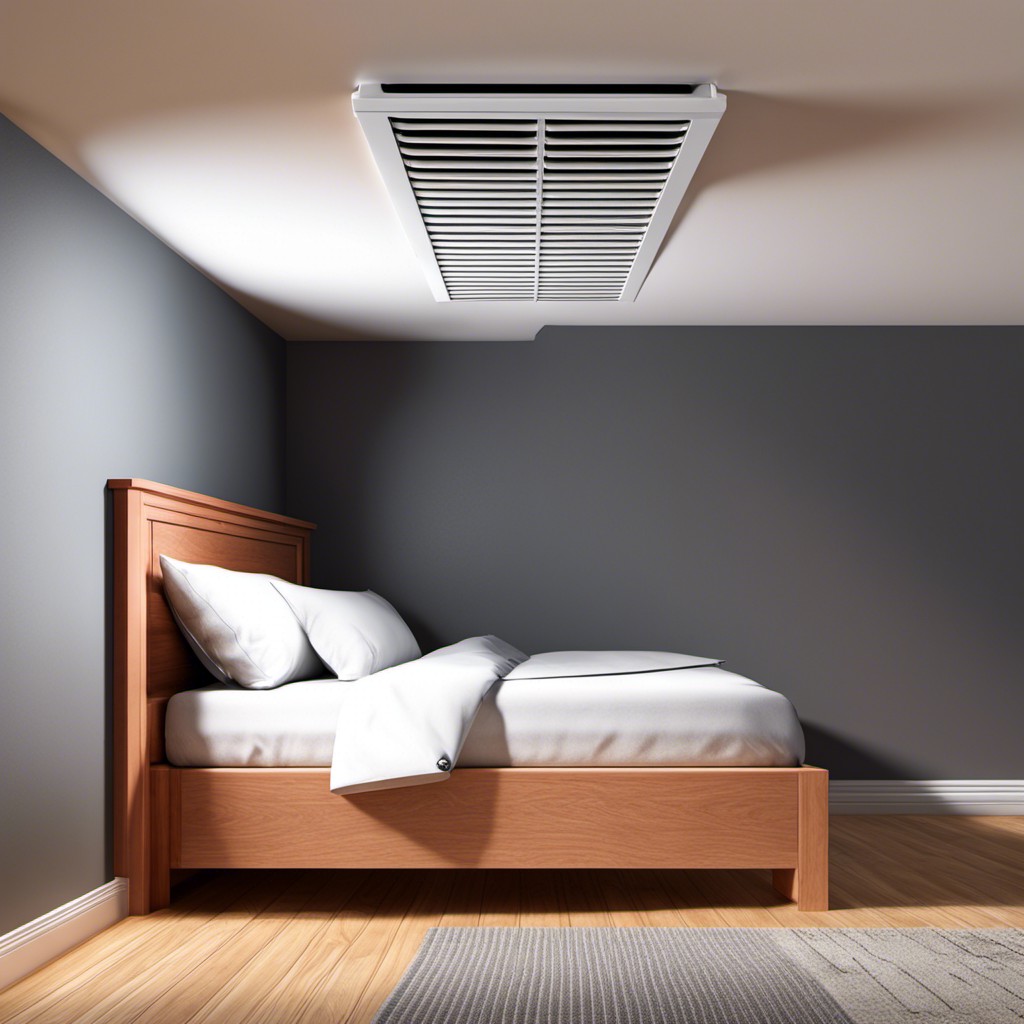
As practical as they may be, vent covers also leverage the power of design. They lead the air in the desired direction without compromising the structure or positioning of your bed. Installing these covers can be a simple DIY task, made easier using commonly found tools.
1. Variety: Vent covers come in multiple designs – grates, grilles, registers, or diffusers – each suited for specific air redirection needs. Hence, choose one that fits your situation.
2. Material: They are usually made of plastic or metal. While plastic ones are lighter and easier to install, metals like brass or bronze add a dash of elegance.
3. Installation: Depending upon the design of the vent cover, installation might vary. Typically, you’d align it with your vent opening and then secure it with screws.
4. Convenience: They are easy to clean and maintain. A monthly dusting should keep them functioning efficiently.
5. Customizing: While the covers can be paint-friendly, ensure to use breathable paints to avoid clogging the vent openings.
Take note, while vent covers successfully redirect air, make sure not to block the airflow completely for maintaining proper room ventilation.
Incorporating an Underbed Storage for Lofted Vent
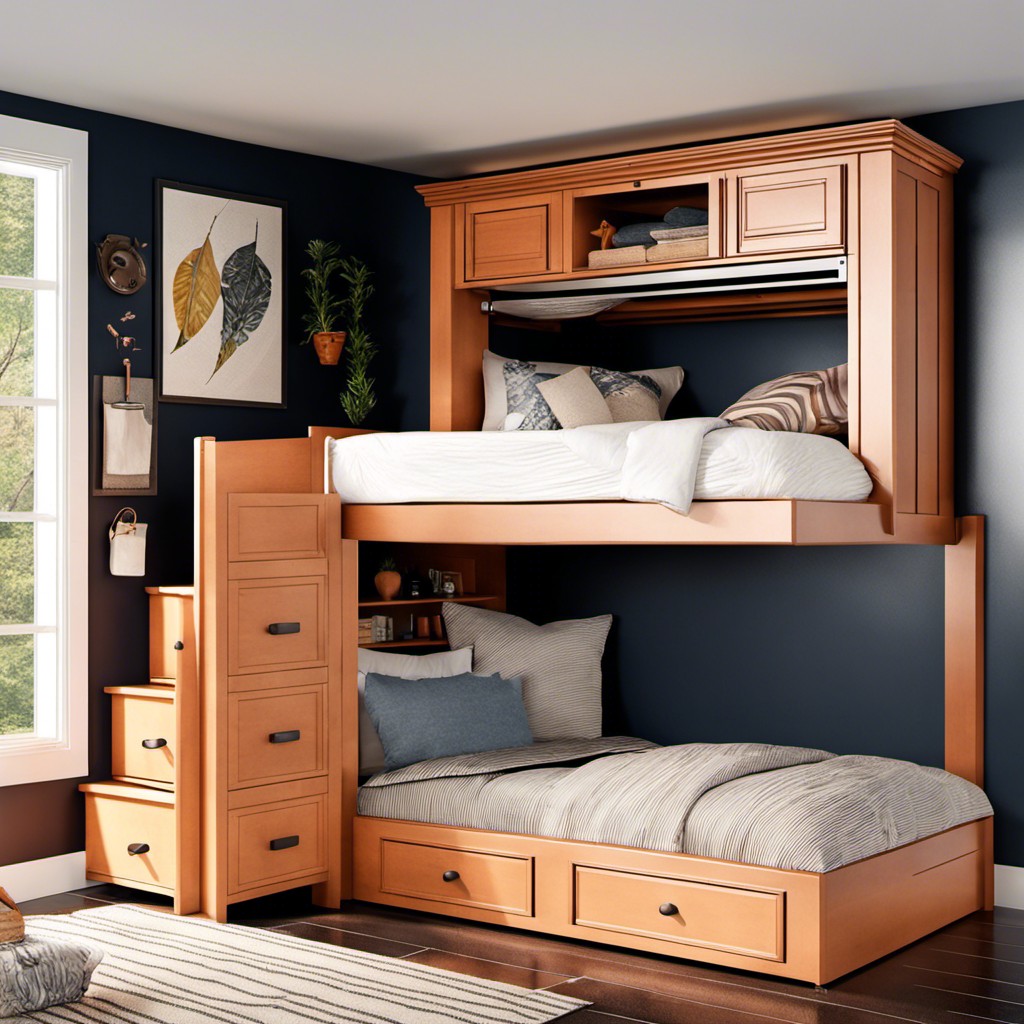
Underbed storage for a lofted vent serves a dual purpose not only facilitating better airflow but also offering space efficiency.
Here are some crucial considerations:
- Opt for breathable, non-plastic containers that wouldn’t restrict airflow.
- Ensure there’s ample clearance between the vent and storage items for effective circulation.
- Regularly dust and vacuum the storage to prevent accumulation, keeping the vent and air clean.
- Use lightweight items instead of heavy ones, to allow smooth airflow beneath.
- Install temperature-resistant storage containers to avoid any heat-induced damage.
Mind to use this added space responsibly, maintaining a direct airflow is essential as it can significantly affect the room’s overall temperature.
Install a Decorative Iron Grille Over the Vent
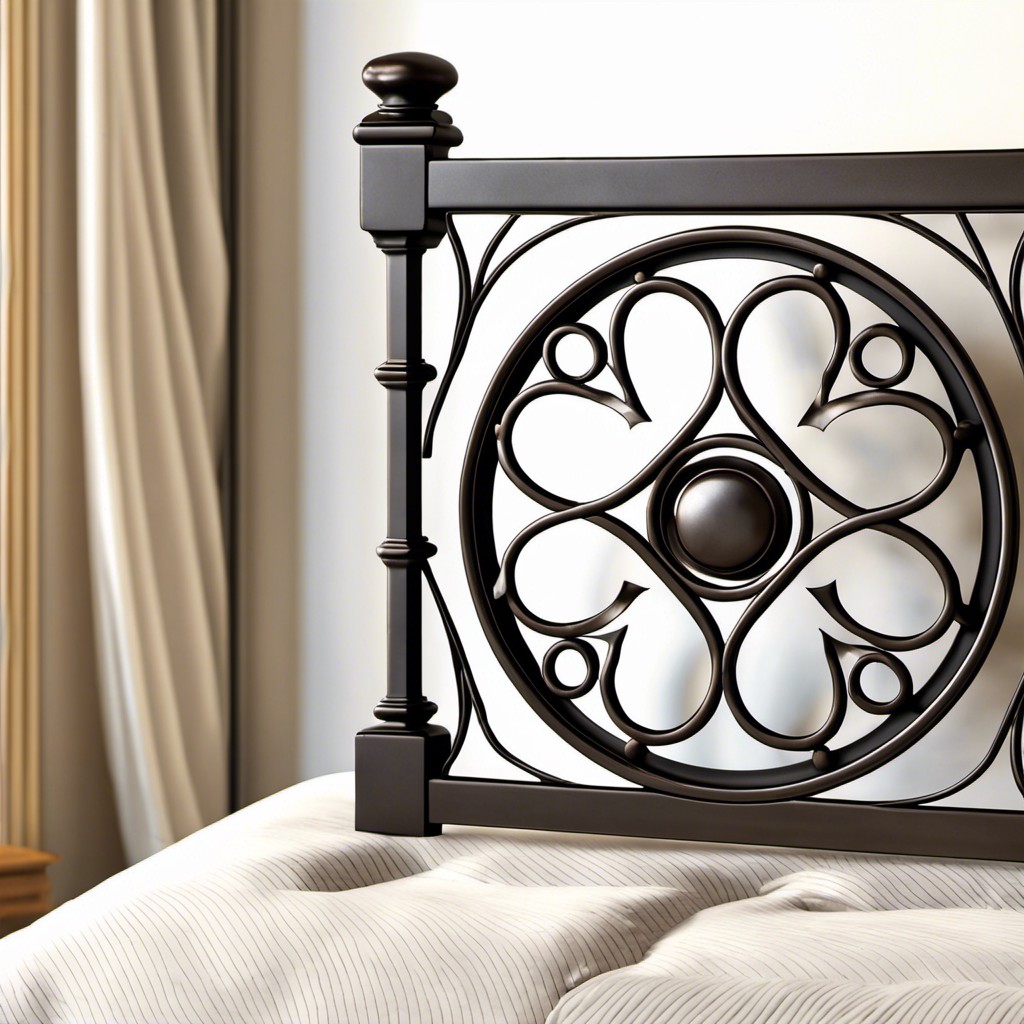
Crafted specifically to cover open air ducts, iron grilles are a perfect blend of functionality and aesthetics, complementing a wide range of interior styles from rustic to contemporary. They come in various designs and sizes, so finding the perfect fit isn’t a daunting task.
First off, they are simple to install – simply measure the vent opening, order the suitable grille size and secure it over the vent with screws supplied by the manufacturer. While providing an attractive cover for the vent, the design’s open structure ensures uninterrupted airflow, thus maintaining the room’s temperature intact.
It’s also worth mentioning that these iron grilles are durable. Made from cast iron or wrought iron, they can withstand the weight of your bed without bending or breaking. Moreover, they require minimal upkeep and can be easily cleaned without needing to move the entire bed structure. Remember to consider the weight your bed frame can carry before opting for an iron grille.
For that added personal touch, consider painting the grille to match your room’s decor or leave it as is to enjoy the natural patina that develops over time. This simple yet ingenious solution can transform an overlooked functional aspect into a unique design feature within your bedroom, enhancing its overall appeal.
Use Air Conditioner Deflectors

A well-positioned air conditioner deflector serves as a great tool for directing airflow, ensuring that your vented bed base doesn’t create a ‘cold spot’ during those winter months.
First, you’ll want to adjust the deflector toward the area where you prefer the airflow. This could be along the floor line or towards the ceiling depending on your room configuration.
Secondly, the majority of air conditioner deflectors come with magnetic attachments, making installation alongside metal vents a breeze. If the vent is not metal, adhesive strips or screws are usually provided.
Remember, comfort is key. Regularly reassess the deflector’s position to ensure optimal airflow. Too much directed airflow could make the space uncomfortably cold, while too little may limit the benefits of the heating or cooling system.
Keep this information in mind for an effective and comfortable use of air conditioner deflectors with a bed over a vent.
Install an Under Bed Vent System
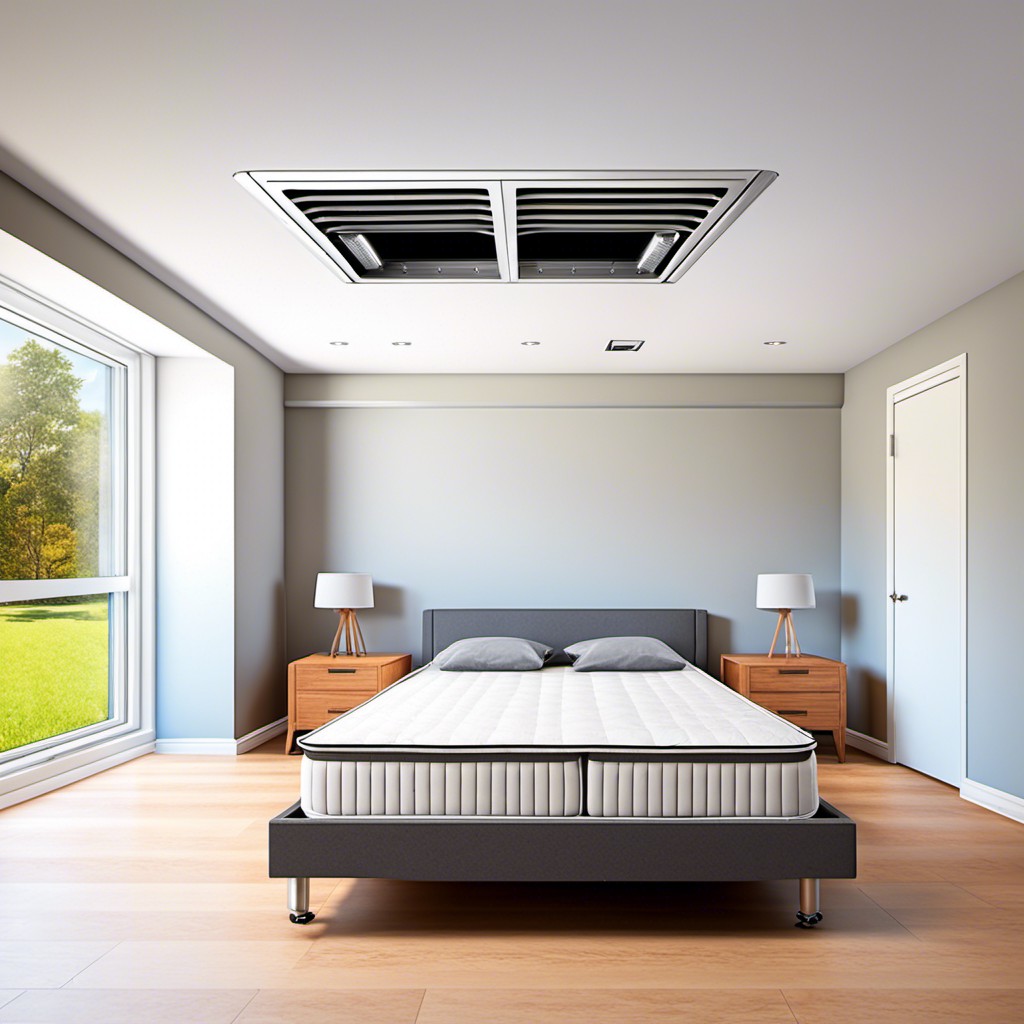
A specialist HVAC contractor can introduce an effective under-bed vent system. This unique, customized setup will help to direct the airflow from a heating or cooling device, ensuring that it navigates around the bed rather than directly under it.
Here’s how it works:
- 1. A vent extension, made of lightweight yet durable material, is attached directly to your home’s existing vent.
- 2. This extension carries air along a pre-set path, detouring around your bed.
- 3. The rerouted air is then released into your room via a secondary vent.
- 4. The end result: Your bed rests comfortably without blocking the air pathway, keeping your room at the desired temperature.
For the best results, it’s important to ensure that this system is regularly cleaned and kept free of obstructions to guarantee efficient air circulation. Also, monitor the indoor humidity level to prevent condensation build-up inside the vent system.
This solution is particularly viable in homes where rearranging furniture isn’t practical, or where vents are located in inconvenient spots, allowing you to enjoy a balanced indoor climate without any compromises.
Use a Platform Bed With Vented Bottom
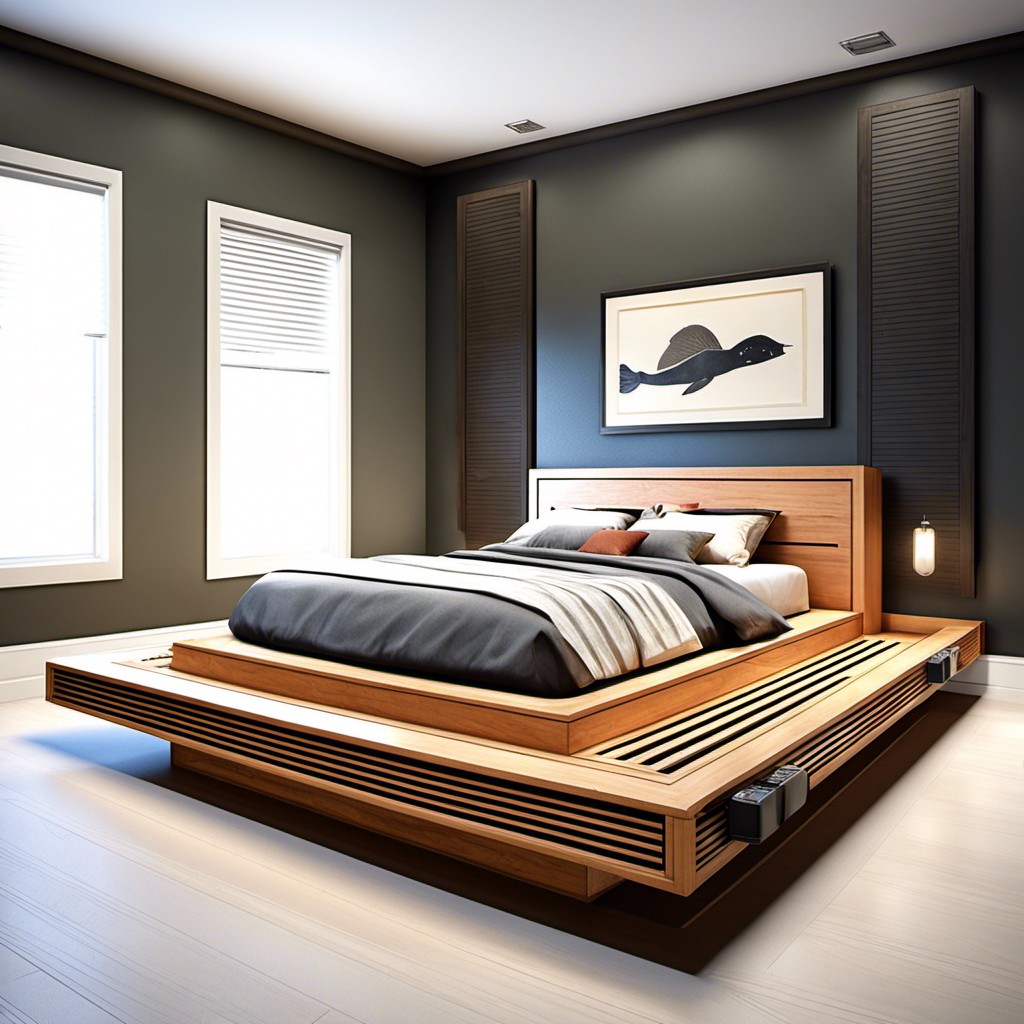
Choosing a bed with a vented bottom provides a clever solution. Often found in platform designs, these types of beds have slats or built-in grills that naturally allow the air to circulate, preventing the blockage typically associated with solid bed bases.
Do note that wood, especially pine or bamboo, and metal are ideal materials given their airflow-friendly properties. Ensure the slats are properly spaced, permitting sufficient air passage without sacrificing the strength and support of the bed.
For an added benefit, consider adding a mattress with similar vented designs, a choice that will contribute to the overall air circulation and potentially add to your sleeping comfort.
Remember, placement of your vented platform bed does matter. Align your bed and vent effectively to maximize the airflow as well as design sensibility. For instance, place the head or foot of the bed over the vent, rather than in the middle, to maintain floor layout efficiency and further enable indirect airflow.
With proper planning and execution, a platform bed with a vented bottom provides an aesthetically pleasing and pragmatic solution to the common problem of having a vent under your bed.
Incorporate Heat-friendly Bedding Materials

Choosing the right bedding materials can impact the heat regulation within your sleeping area. Opt for breathable, heat-friendly fabrics like cotton or linen for sheets and mattress protectors. These materials not only enhance comfort but also ensure good air circulation around your bed.
For pillows, consider using ones filled with buckwheat hulls—they are known to allow more airflow compared to traditional fillings, ensuring that you sleep cooler.
Mattresses too, can be chosen with cooling features. Many brands offer options with gel-infused memory foam or innerspring systems that promote airflow. Remember, these choices contribute to a reduction in heat accumulation and enhance the overall comfort of your bed—all important considerations when placing a bed over a vent.
Use Inflatable Furniture As Buffer
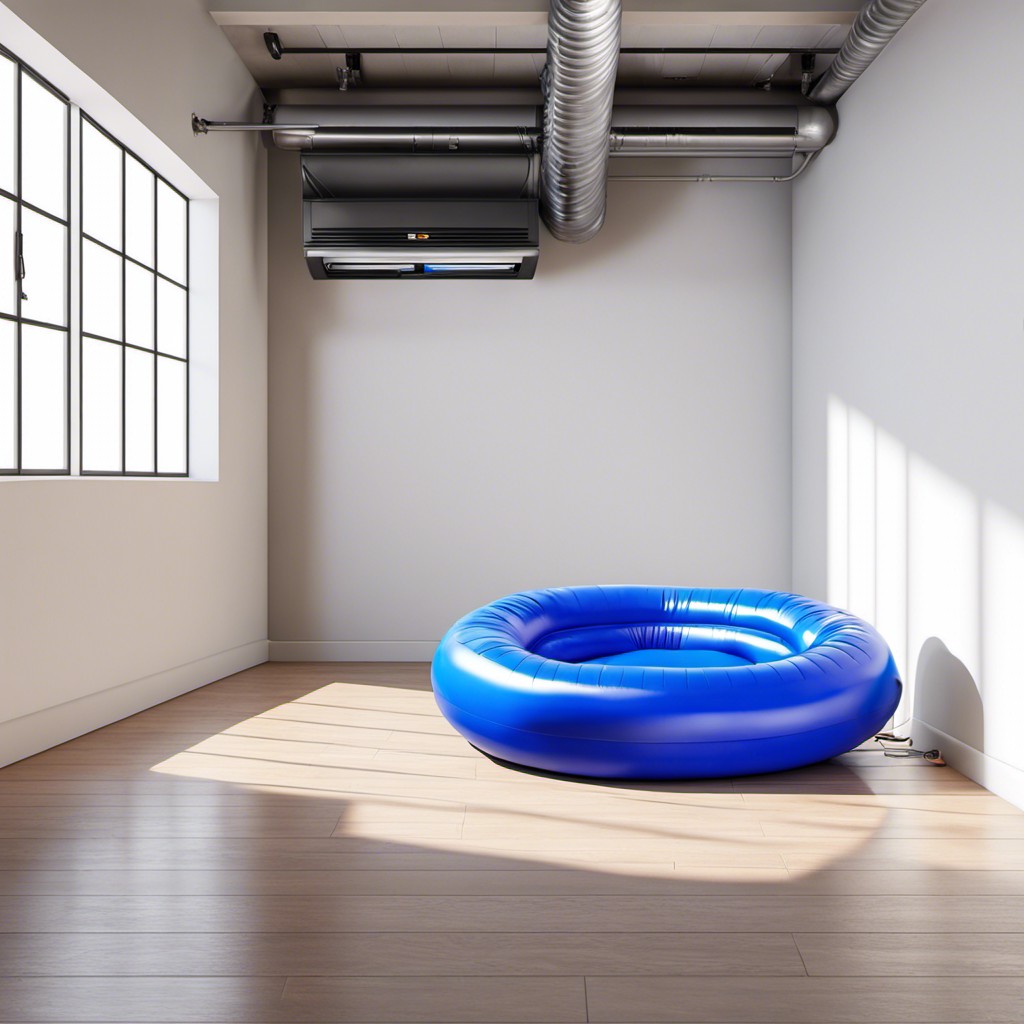
Choosing an inflatable bed or furniture can offer a unique solution. These light and portable pieces can easily be adjusted allowing optimal air circulation from the vent. Additionally, they don’t fully block the vent as the material is not as dense as traditional furniture, enabling improved ventilation. Plus, you can deflate them when not in use, freeing up space and ensuring uninterrupted airflow.
For maximum benefit, choose options with an elevated design to permit better under-bed ventilation. Remember to maintain and check inflatable furniture regularly, as punctures or leaks can affect performance and comfort.
Install a Sieve-like Bed Bottom for Air Passage
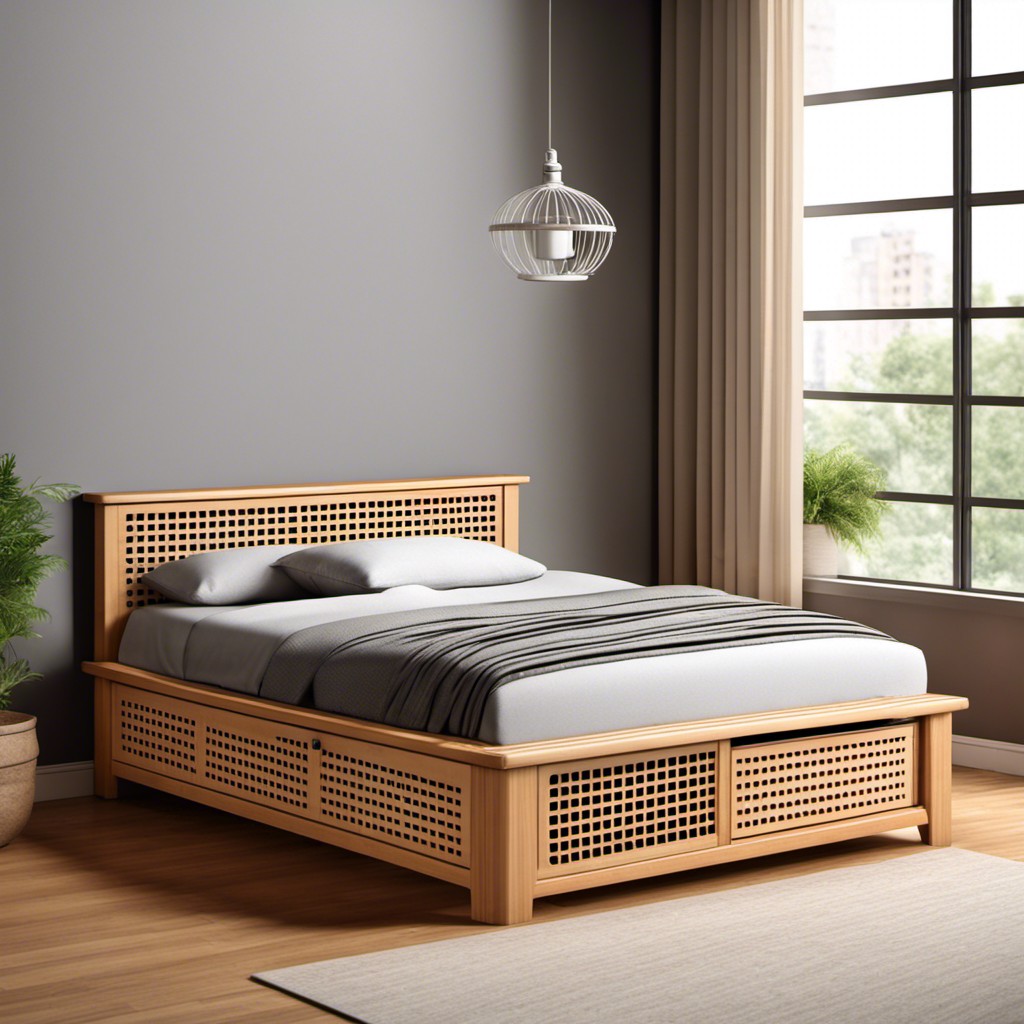
Choosing a bed with a sieve-like bottom provides an ideal solution due to its inherent design. This type of frame allows air to conveniently pass through without obstruction, facilitating proper circulation and temperature regulation in the space being covered. It’s essential to make sure the gaps in the bed bottom aren’t too large though, as it could decrease the structural integrity and overall safety of the bed.
Several models on the market are designed with open-slat or steel mesh platforms, both wired and non-wired, which serve this purpose perfectly. If purchasing a new bed isn’t in the cards, you can also consider retrofitting your current bed frame with slats or a wire mesh bottom.
Besides, this arrangement can also help keep the dust away from the beddings and add to the hygienic aspect of your bedroom – providing both a practical and aesthetic benefit. The sieve-like structure isn’t just functional, it also adds a unique, modern aesthetic touch, lending a sense of spaciousness to the room.
Placing Perforated Bed Boards Over the Vent

A unique strategy, employing perforated boards can work wonders for proper airflow. These boards, designed with a multitude of small holes, allow for continuous air passage.
Here’s why it works:
- 1. Dual Function – Besides better ventilation, these boards also provide essential support to your mattress giving you added comfort.
- 2. Versatility – They come in different shapes and sizes, enabling you to find the perfect match for your bed frame and vent layout.
- 3. Ease of Installation – They require minimal setup, you just need to put them over the vent area under your bed.
- 4. Maintenance – The power of vacuum cleaner suffices for cleaning these boards ensuring no blockage in the airflow.
- 5. Aesthetics – Their sleek design and modern appeal give an added advantage, adhering to your overall decor theme.
Remember, the goal is to align these boards in such a way that they cover the vent without blocking it, thus achieving unhindered airstream. This even aids in maintaining an optimal room temperature.
Creating a DIY Wooden Air Deflector
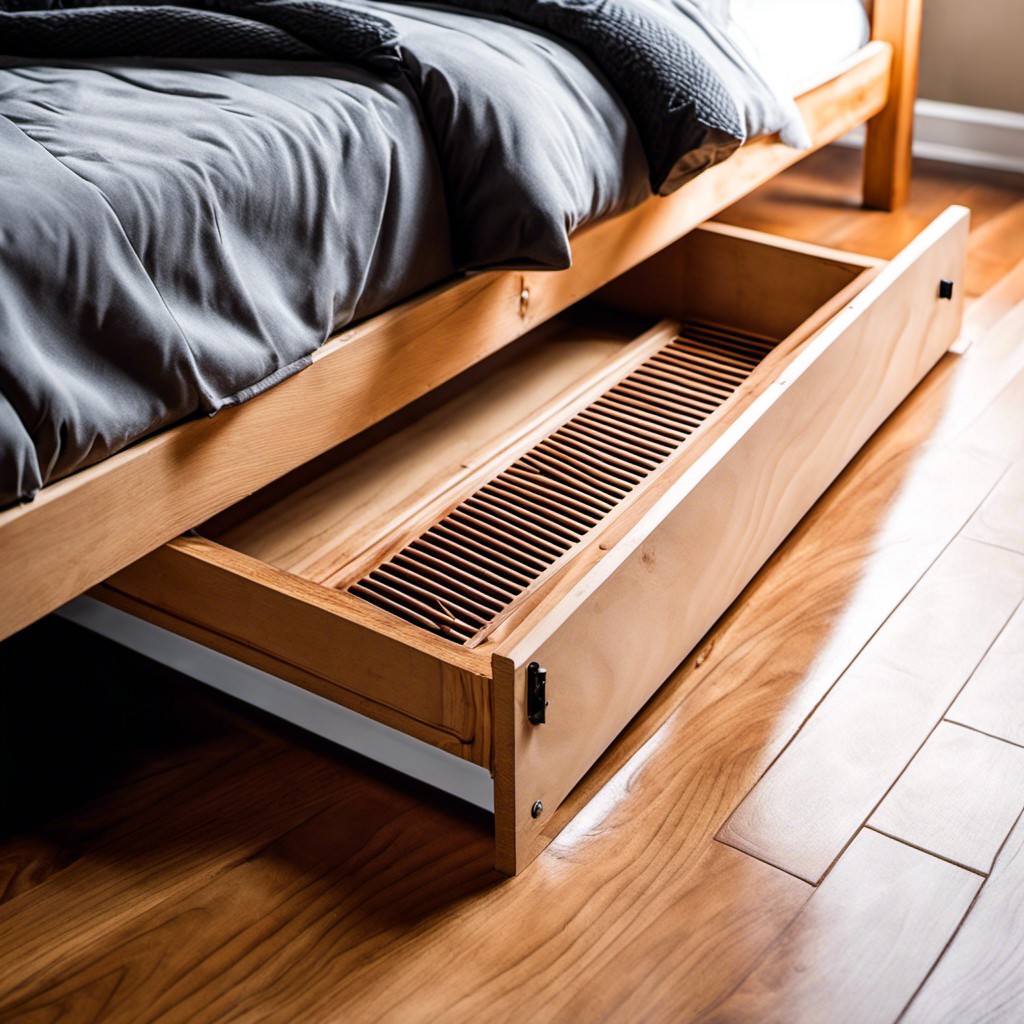
Diving into the details, you’ll be thrilled to know this task is fairly manageable even for those not so handy with tools. All you need for this project is a piece of plywood, measuring tape, some screws, and an electric drill.
Start by measuring the dimensions of the vent. This will dictate the size of the deflector you need to construct. Cut your plywood to fit these dimensions, leaving an extra inch or two on each side for leeway.
The idea behind the deflector is to guide the air coming out of the vent in a different direction, so it doesn’t heat or cool the underside of the bed directly. To achieve this, the deflector should raise and tilt slightly in the opposite direction from the bed.
To install, position the deflector over the vent and secure it with screws. You don’t have to bolt it directly into the floor; a gravity-based stance will work just fine. Allowing a tiny overhang over the vent can improve the deflection effectiveness.
Experiment with different angles and positions by observing the airflow to achieve the most comfortable result for your bedroom setup. This innovative solution controls airflow and crucially ensures uninterrupted sleep.
Get ready to delight in the newfound comfort this setup brings, proving decor and practicality can go hand in hand!
Install an Air Diversion System Under the Bed
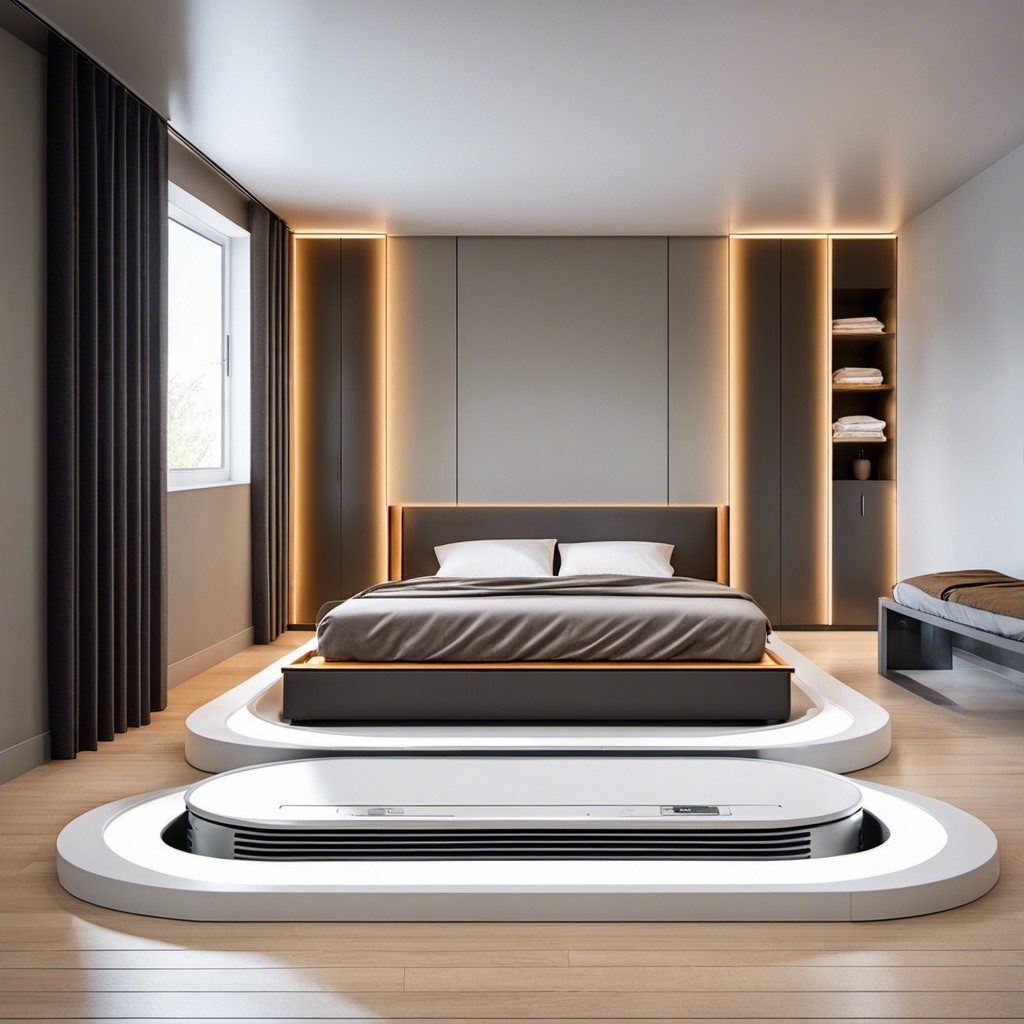
An under-bed air diversion system can be a highly efficient solution, especially for large bed structures. It directs the airflow from the vent to exit out from desired sides. Essentially, it acts as an elaborate tunnel, guiding the heated or cooled air around the bed’s under-zone.
1. Selection: Ensure you choose a system that is specifically designed for vent redirection and fits the dimensions of your existing vent.
2. Installation: The setup involves connecting the tunnel-like structure to the vent outlet. It may require basic assembly, typically handled with basic tools like a screwdriver.
3. Airflow Direction: You can adjust the system to direct the airflow to the sides or front of the bed, depending on your room layout. The design prevents any potential blockage, ensuring optimal airflow and room temperature.
4. Cleaning: Routine maintenance is always recommended. The system is typically easy to disassemble to clean accumulated dust and ensure better air quality.
5. Cost-Efficiency: Such systems are generally energy-efficient as they prevent the loss of cooled or heated air, further helping you save on utility bills.
Remember, professional consultation can be immensely helpful before installation to ensure safety and efficacy.





